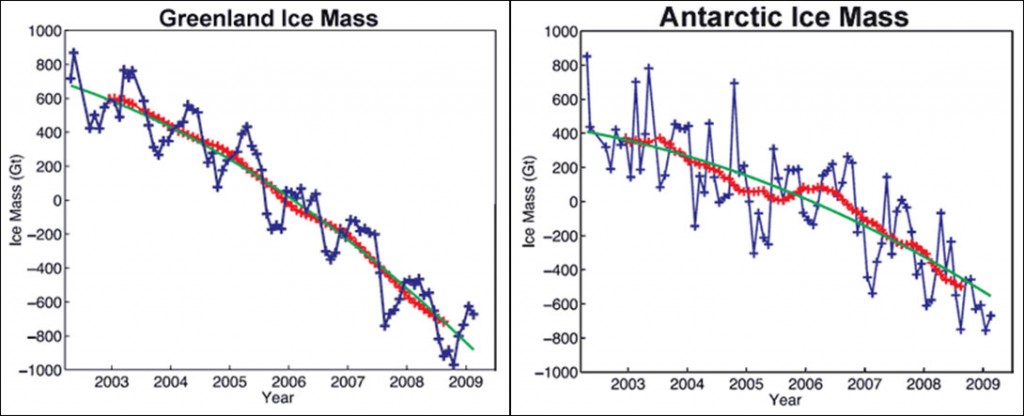Woods Hole Oceanographic Institution: Oceans in a Warming World
To most people, global warming means rising temperatures in the atmosphere or on Earth’s surface. They often overlook 70 percent of that surface – the ocean – where some of the most important effects of warming are taking place. By adding greenhouse gases to the atmosphere, humans have trapped long-wave radiation from escaping back to space. And, since the 1980s, about 80 percent of that trapped heat has been absorbed by the ocean. How the ocean distributes that heat affects land, sea, air and ice. Among the early indicators of rising temperatures on our planet are recent histories of rising sea level and disappearing ice on land and sea in polar regions. A common thread for many of the changes is an important role for the oceans.
Arctic Sea Ice: A Leading Indicator of Warming
Based on ship and other observations, sea ice extent in the Arctic Ocean during summers appears to have begun retreating in the mid-1950s (Figure 1). Polar-orbiting satellites launched in the late 1970s provide a more accurate record of the continual retreat in summer sea ice (Figure 2).
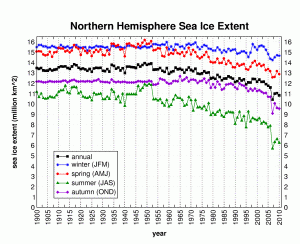
Fig. 1 – © UIUC Dept. of Atmospheric Sciences’ Polar Research Group – Read More
The smallest summer sea ice extent occurred in September 2007 and while summer sea ice extents have been slightly higher in the last three years, they still follow an overall long-term melting trend. Because so much melting has occurred, the thickness of Arctic sea ice has rapidly declined in recent years. As a result, the volume of Arctic sea ice in 2010 reached its lowest level in the last several decades (Figure 3).
The rate of sea ice retreat has been faster than predicted by models, which implies that we do not fully understand the response of this system to planetary warming. So, it is hard to predict when the Arctic may be essentially ice-free in summers. But, if recent trends continue, it may happen within a few decades.
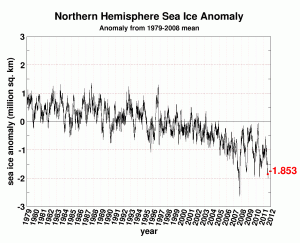
Fig. 2 – © UIUC Dept. of Atmospheric Sciences’ Polar Research Group – Read More
The potential, let alone reality, of an ice-free Arctic Ocean has important ramifications for navigation, mining, oil drilling and other considerations with geopolitical and military consequences. And, it also has implications for further ocean circulation and climate changes. The bright white surface of sea ice reflects much of the incoming solar energy that shines on the Arctic Ocean each summer, which acts to keep the region cold. Without summer sea ice, the sun’s heat is absorbed by the ocean, thus warming the water and making it more difficult to cool and to form ice the following winter.Therefore, reductions in sea ice produce a positive feedback accelerating the overall warming trend on Earth, especially in the Arctic region.
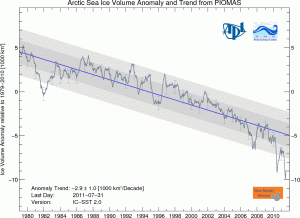
Fig. 3 – © Polar Science Center – Read More
Warming of Oceans and Sea Level
High-quality measurements of ocean temperatures since the beginning of the Cold War (when submarine warfare became an important part of United States and Soviet Union defense strategies) tell us ocean basins have been gaining heat since that time. Most of these measurements have been made by ocean-going vessels. But, in the late 1990s, the international science community developed a program to deploy a fleet of more than 3,000 autonomous floats (View Figure) that routinely measure ocean temperature and salinity, and transmit data via satellite (Read More).

Fig. 4 – © http://sks.to/cooling – Read More
The sum of these float and ship-based measurements paints a picture of a decades-long warming trend largest near the surface of the oceans. But the warming can be traced to even greater ocean depths – down to 4,000 meters in some locations. The temperature change is small because it takes much more heat energy to change the temperature of seawater compared to air. On the other hand, total amount of heat gained by the ocean since the 1950s has been enormous – many times more than land and atmosphere combined. And it has been increasing by leaps and bounds since the 1980s (Figure 4). If the ocean hadn’t acted as the principal storage location for excess heat, our atmosphere would have warmed much more within the last several decades, and more ice would have melted as well.
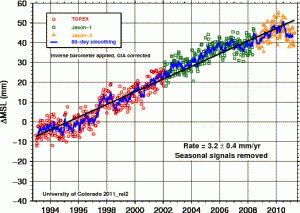
Fig. 5 –© CU Sea Level Research Group – Read More
Even a small warming of seawater can have profound effects because, when heated, it expands with important consequences for sea level. Based on two decades of satellite measurements, sea level is currently rising at a rate of about 3 millimeters per year (equal to slightly more than one inch each decade) (Figure 5).
And, even a small, gradual sea level rise can have disproportionate impacts when amplified by episodic storm surges that flood coastlines and destroy protective natural barriers. Unprecedented sea level rise within the next century increases potential hazards along the coast, which includes naval ports and military installations. Right now, three of my colleagues at Woods Hole Oceanographic Institution (WHOI), geologists Rob Evans, Jeff Donnelly and Andrew Ashton, are studying potential sea level rise impacts on two of many military bases located on the coast: Florida’s Eglin Air Force Base and North Carolina’s Marine Corps Base at Camp Lejeune.
Most sea level rise within the past century has resulted from seawater thermal expansion and small mountain glacier melting. Only a small part has come from melting of Greenland and Antarctica’s large land-based ice sheets. Future projections, based on the Intergovernmental Panel on Climate Change (IPCC) Fourth Assessment in 2007, estimate sea level in 2100 to be between 18 and 59 centimeters (7 and 23 inches) higher than today. These estimates were based on projections for continued seawater thermal expansion and increased melting of land-based glaciers and ice sheets caused by future rising air temperatures.
The IPCC also considered a third process: changes in ice dynamics – in particular, destabilization of large regions of polar ice sheets at their bases, which would cause them to flow more rapidly into the sea. However, at the time, IPCC was unable to quantify future changes in discharge of land-based ice, so its projections for future sea level rise are minimum estimates at best. It turns out that recent investigations show ice sheets may be playing an increasingly active role in sea level rise.
Glacier Melting and Sea Level
High-quality satellite measurements of Earth’s gravity field now show both Greenland and Antarctic ice sheets losing mass (Figures 6 and 7). In Greenland, the pace of ice flowing into the ocean from glaciers has accelerated in the last two decades. [http://www.agu.org/news/press/pr_archives/2011/2011-09.shtml] From 1997 to 2003, the speed of Jakobshavn Glacier on Greenland’s west coast has doubled. Jakobshavn is Greenland’s largest outlet glacier and drains 6.5 percent of the entire ice sheet. [http://www.nasa.gov/vision/earth/lookingatearth/jakobshavn.html]
In 2008, WHOI glaciologist Sarah Das and colleagues documented a long suspected, but never before detected, mechanism that hastens the pace of glacial flow. [sciencemag.org/content/320/5877/778.full] Each spring and summer, sunlight melts snow and ice into water that pools into supraglacial lakes atop the ice sheet. Das found that the weight of the water in the lakes can build up enough pressure to open cracks beneath them that extend through the entire thickness of the ice sheet. This cracking process opens up a direct pathway for melt water to reach the base of the ice where it provides lubrication throughout summer – speeding up the glaciers’ flow and punctuating their otherwise steady march toward the ocean. (To view an audio slide show of Das’ research, click here. To view an animation of the glacial melting process, click here.) This finding adds a new wrinkle to climate change scenarios. Earth’s warming climate, especially near the poles, could extend the melting season, create more supraglacial lakes across the ice sheet and cause even more widespread acceleration of the ice sheet each summer.
In eastern Greenland, the Helheim Glacier nearly doubled its speed in just a few years – flowing through a rift in coastal mountains at 30 meters (100 feet) per day. At the same time in Sermilik Fjord, where Helheim Glacier empties into the Atlantic Ocean, the glacier’s leading edge has been rapidly retreating.
Fig. 8 – Animation created by Jack Cook, Woods Hole Oceanographic Institution
Fig. 9 – Animation created by Jack Cook, Woods Hole Oceanographic Institution
The retreat coincides with warming ocean waters in the subpolar North Atlantic. And recently, several investigators have shown that these warm waters flow into the fjords directly to the base of the glaciers. Another WHOI colleague, Fiamma Straneo, measured waters as warm as 4°C (40°F) at the base of Helheim Glacier in Sermilik Fjord. The presence of such warm water in contact with ice may help explain why glaciers are retreating (Figures 8 and 9, animations). However, researchers can’t be sure of this because they’ve obtained temperature measurements in this area only within the last few years due to the location’s inaccessibility, even for icebreakers. To test the hypothesis, we will need autonomous monitoring systems capable of measuring changes in circulation and hydrographic properties of seawater in the fjords.
Continued increase in atmospheric greenhouse gases ensures oceans will continue to warm and sea levels to rise. Both processes will bring warm waters to the base of glaciers in many of the fjords, which will accelerate melting and calving of ice into oceans, and the rise in global sea levels.
How high will sea levels rise? We don’t really know, but recent research suggests that by 2100, they could be one meter or more higher than today (nature.com/climate/2010/1004/full/climate.2010.29.html), which is about double the IPCC 2007 projection. Stay tuned; this is an area of active, fast-breaking research










